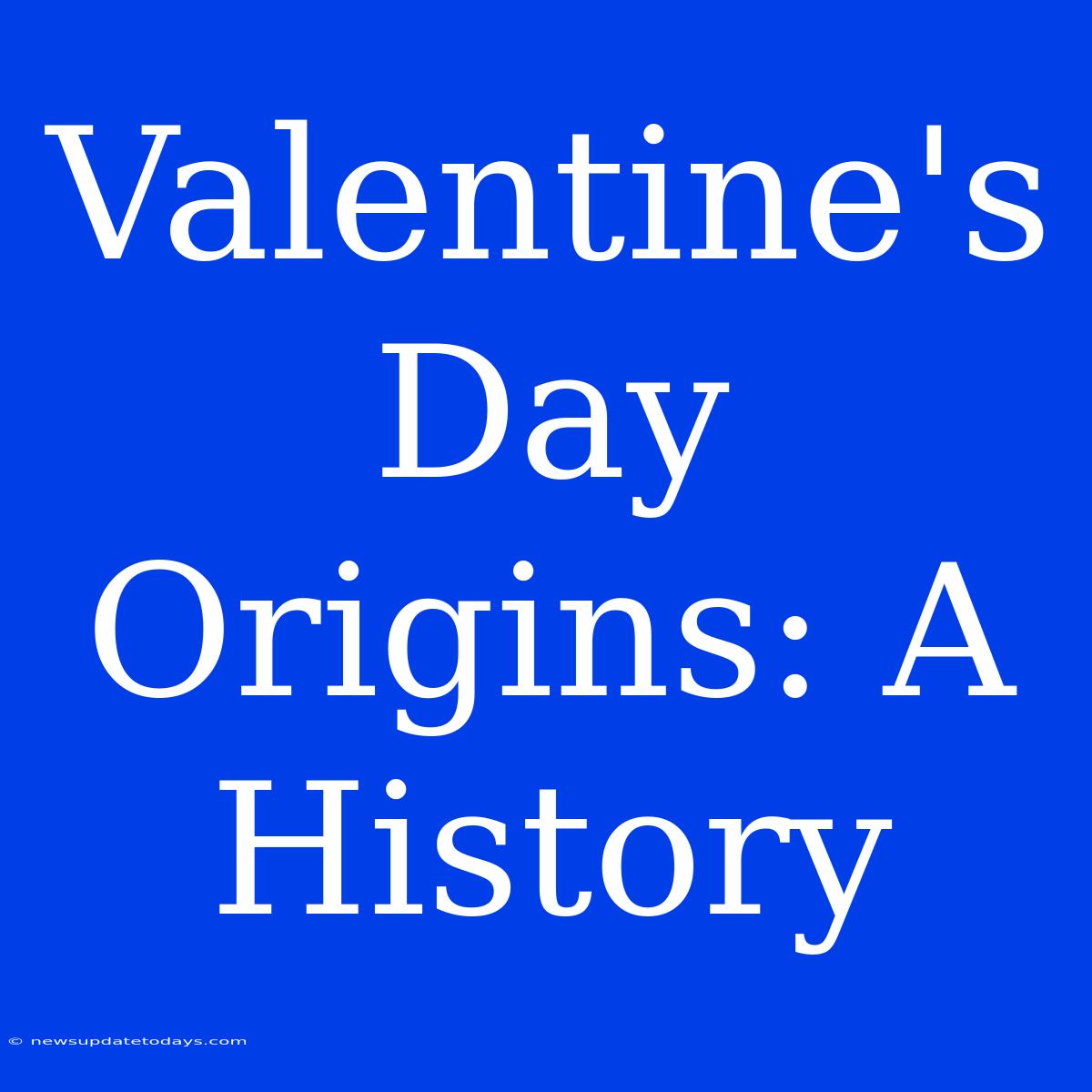Valentine's Day Origins: Unearthing the History Behind the Holiday
Valentine's Day. The day of hearts, flowers, chocolates, and romantic gestures. But have you ever stopped to wonder about its origins? This seemingly modern celebration boasts a history far richer and more complex than many realize. This article delves into the fascinating origins of Valentine's Day, separating fact from fiction and uncovering the surprising truth behind this beloved holiday.
The Many Valentines: Unraveling the Mystery
The truth is, there's no single, definitive origin story for Valentine's Day. Instead, several historical figures and legends intertwine to create the holiday we know today. The name "Valentine" itself is linked to several early Christian saints, all martyred around the same period. One prominent theory centers on Saint Valentine of Rome, a priest who defied Emperor Claudius II's ban on marriages for young men. Claudius believed single men made better soldiers, and Valentine, defying this decree, secretly performed wedding ceremonies for young lovers. This act of defiance, coupled with his eventual martyrdom, cemented his place in romantic lore.
Beyond the Saints: Pagan Influences and Ancient Roman Festivals
However, the story doesn't end with Saint Valentine. Many scholars believe that Valentine's Day's roots also lie in ancient Roman festivals. Lupercalia, a pagan fertility festival celebrated in mid-February, involved ritualistic pairings of men and women through a lottery system. This festival, with its focus on love and pairing, might have influenced the development of Valentine's Day's romantic connotations.
The Evolution of Valentine's Day Traditions
The transition from ancient Roman festivals and the veneration of Saint Valentine to the modern Valentine's Day we celebrate is a gradual one. The association of Valentine's Day with romantic love solidified over centuries, with the exchange of love letters and tokens becoming increasingly popular during the Middle Ages and the Renaissance. Geoffrey Chaucer's "Parliament of Foules" (1382) further cemented this association, linking the day to the mating season of birds.
From Handwritten Letters to Commercialized Celebrations: A Modern Transformation
The 18th and 19th centuries saw the rise of mass-produced Valentine's Day cards, transforming the holiday into a more commercially driven event. The Victorian era, in particular, witnessed an explosion in the popularity of commercially printed cards, making the expression of romantic sentiments accessible to a wider audience. This transformation, while altering the holiday's character, has cemented its place in popular culture as a global celebration of love.
Valentine's Day Today: A Global Phenomenon
Today, Valentine's Day is celebrated globally, albeit with variations in traditions and customs across different cultures. While the core theme of love and affection remains consistent, the ways in which people celebrate this day differ widely, reflecting the diverse cultural tapestry of the world.
Conclusion:
The origins of Valentine's Day are multifaceted and steeped in history. From the legends of Saint Valentine to the influences of ancient Roman festivals, the holiday's evolution reflects a fascinating blend of religious, pagan, and cultural influences. While the exact origins remain shrouded in some mystery, one thing is certain: Valentine's Day's enduring appeal lies in its universal celebration of love in all its forms. So this Valentine's Day, take a moment to appreciate the rich history behind this beloved holiday and the enduring power of love itself.

